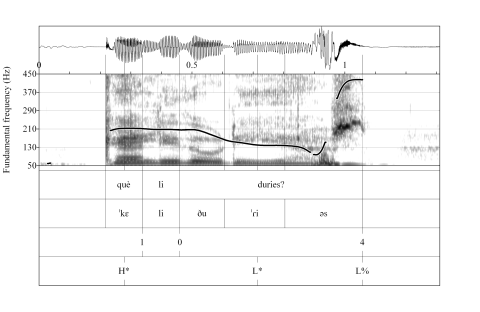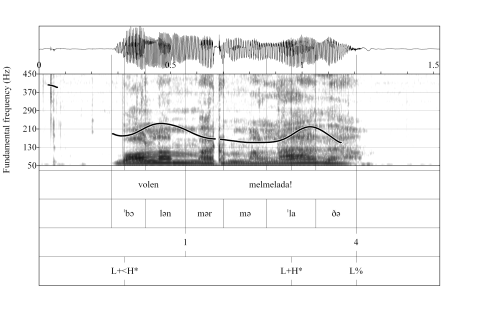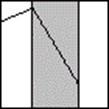H*

This pitch accent is phonetically realized as a high plateau, and no initial dip is observed.
L+H*

This pitch accent is phonetically realized as a rising pitch movement during the accented syllable. The rise starts at the onset of the accented syllable and ends at the end of that syllable.
Example H*: Neutral wh-question
Example L+H*: Narrow focus statement
Què li duries?
[What would you take him/her?]

Volen melmelada (i no mantega)
[They want some jam (and not some butter)]

Explanations
The first example is a wh-question, in which we can see two H* pitch accents. The first pitch accent is aligned to the wh-word què: the F0 is constant during this syllable and stays on a high plateau. The nuclear pitch accent is also H*: there is a high plateau during almost the whole syllable, and a fall occurs in the postaccented syllable.
The second sentence is a statement with a narrow focus on melmelada. The F0 is low in the syllable previous to the accented one, there is an F0 turning point at the beginning of the accented syllable and the pitch rises to a high target at the end of this syllable: this pitch accent is L+H*.
The difference between H* and L+H* is basically the direction of the pitch movement during the accented syllable: H* is a plateau with no initial dip, whereas L+H* is a rise from a low level to a high one.







